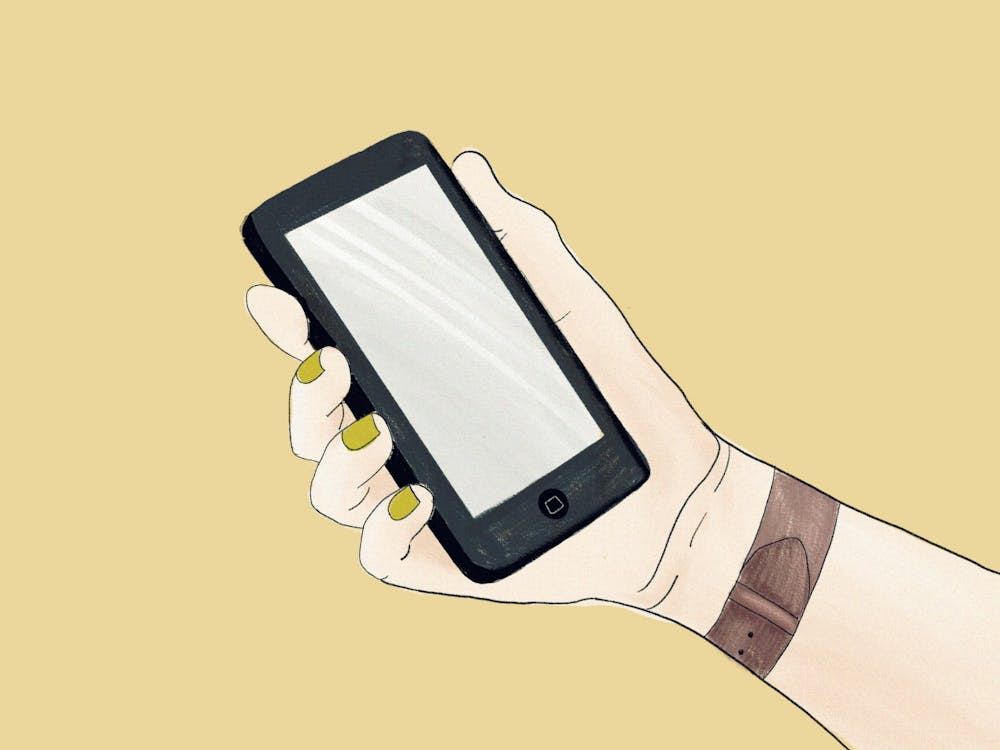Social media can be a toxic competition masquerading as harmless entertainment. Not only do users compete for likes and followers, they use those numbers to determine the prettiest face, the most successful artist, the happiest family and the most powerful activist. Yet, with most college students in quarantine, this is one of the only methods we have to interact with other students. Now that quarantine has forced most of our social interactions online, some Duke students have found unique ways of strengthening connections during this period of isolation.
Those of us who have never lived in a world without the Internet have a complicated relationship with it. We know that scrolling through our newsfeed is a waste of time, but we’re addicted to constant occupation; we know idolizing models destroys our self-image, but we’re obsessed with their seemingly perfect lives. Using these platforms to obtain validation from others often prevents us from learning how to satisfy ourselves.
When the world is at its most vulnerable, however, teens use these platforms to uplift each other, transforming social media’s focus from influence and consumption to compassion.
Yes, bingo cards and the “see a dog, send a dog,” challenge cycled through my Instagram timeline, but I was particularly struck by a few Duke students who created social media accounts and series dedicated to staying connected during this disheartening crisis.
First-year Erin Blanding created quarantine Instagram account @quarantinequtie, on which she posts quarantine outfits, chalk drawings of friends, TikTok dances and collaborative Spotify playlists.
“I wanted to stay in touch with my friends without having awkward one-on-one conversations over text about quarantine,” said Blanding over text. “I started making drawings and stickers for my buds because I wanted to use my mediocre artistic abilities to make everyone’s day a little better!”
Blanding’s account illustrates how social media should be used in troubling times. While reposting IG stories and old vacation photos can help pass the time, writing personalized messages are both simple and thoughtful methods of supporting friends. Without being able to see each other in-person, young people are reinventing social media platforms as the primary source of maintaining personal connections.
“Knowing that I can talk to my friends anytime I make a post has definitely helped me deal with being isolated,” said Blanding. “Hopefully since we’re all still keeping in touch, my account is helping ease some of the stress for others too. It’s a very stressful time and I’m doing what I can to make sure everyone is okay!”
In addition to encouraging messages, humor has been used extensively to promote positivity among students. Though often criticized for making light of serious situations, tasteful humor can be a coping mechanism for many. Comedy allows us to connect to others in a way that is more honest and direct than any other art form. With an endless number of memes at our fingertips, we don’t even need to be in-person to see how the oddly specific is hilariously relatable.
Several students have utilized the Duke Memes for Gothicc Teens Facebook group to laugh and lament with others about being away from the Duke community and transitioning to online classes. Senior Cade McCurdy posted Stephen A. Smith (SAS) reaction videos with Duke-related content every day for two weeks. He was inspired by @SASBurnerAcct on Twitter, who reacts to sports-related news with a variety of SAS gifs, pictures and video edits.
“I didn’t think I could come up with so many Duke-specific memes with other viral memes, but I was familiar enough with SAS videos that I figured I could get at least a week’s worth of memes in,” McCurdy said over text. “I feel like with nothing else to do, people might appreciate a daily reminder of the fun and even stupid things we students deal with daily.”
Memes subliminally reassure us that we are not alone by showing how others relate to our individual experiences. McCurdy revealed how memes bring light into his life and the lives of other students — even if just for a brief moment. His memes, whether about the unexpected end of senior spring or watching Netflix during class, remind us that even when we’re not physically together, we are still connected as Duke students. We are connected by more than the university name, too: we remain connected by collectively dreading discussion groups, missing Shooters and zoning out during Zoom lectures.
“Posting these helped me cope [with social distancing] because I got to kill anywhere between 15 minutes to an hour just watching SAS videos and spitballing ideas. It was a good way to stay busy and maintain a goal to achieve every day.” McCurdy said. “I hope other people liked them at least half as much as I enjoyed making them and that they had something to look forward to during the tough post-Duke adjustment period.”
As in the case of McCurdy and many other Duke students, these captivating apps can lure users with unproductive distractions, but they can also provide joy — especially when we do not have the option to physically see each other. When used thoughtfully and in moderation, social media can teach us how to spread love and communicate with one another in efficient and easily accessible ways. So maybe we waste too much time on our phones. But right now, we’re pretty lucky to have them.
Get The Chronicle straight to your inbox
Sign up for our weekly newsletter. Cancel at any time.

